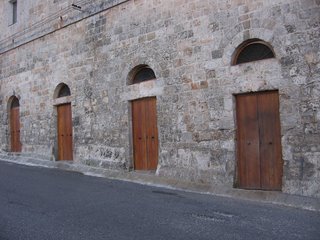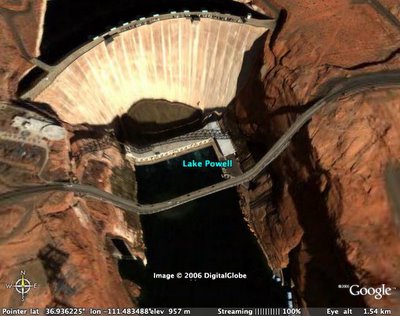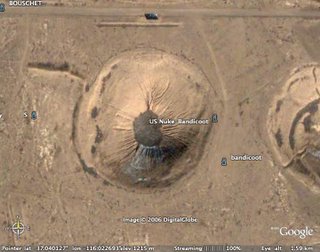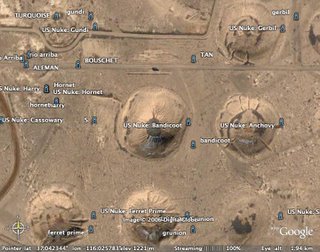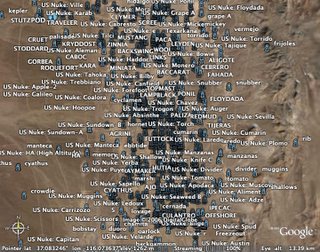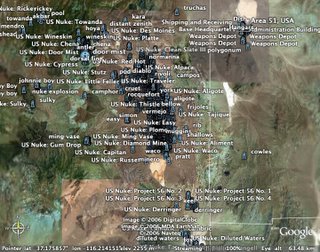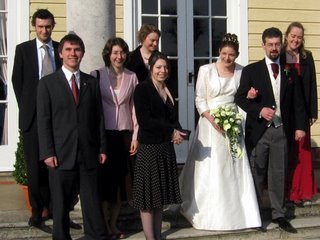
The whole experience surrounding Sarah’s wedding has been a valuable and enjoyable one. It was a pleasure to have the chance to witness her and Peter getting married. My thanks to them both for inviting me, as well as to Sarah’s parents for their extensive hospitality. I wish Peter and Sarah the most enriching, prosperous, and enjoyable of future lives together.
I arrived in Chichester on Saturday more than three hours before the service began. It had been my intention to ensure that – even if I missed a train or something else went wrong – I will still get to the wedding on time. The early arrival gave me the chance to explore the city a bit, as well as have my suit dry-cleaned, as seemed appropriate. As everyone who attended will surely recall, the day was as cold as it was brilliantly sunny, especially after we emerged from the church for the reception. By the time the professional group photos were being taken, the sunlight had a lovely golden hue that seemed to suit the occassion.
The service was held at St. Richard’s Church and was markedly more religious than the only other wedding I’ve attended. There was a good deal of prayer, Bible reading, and the singing of hymns. I particularly enjoyed those, despite how I had never heard any of them before. Attending the ceremony was a surprisingly moving event. While I had always recognized its significance, I didn’t anticipate the extent that it would affect me personally. The subsequent reception included good food, good wine, entertaining speeches, and a celtic band that played rather more songs that I recognized than were included in the service. It was nice to meet some of Sarah’s other friends, as well as her husband’s.
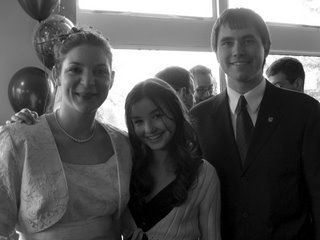
I’ve known Sarah for five years now, since we were students together at the University of British Columbia. She was starting her master’s degree at the time, and I was in my first year as an undergraduate. Since then, I have come to very much value and appreciate her friendship, as well as the correspondence we have exchanged. Hopefully, freed of the burdens of wedding planning, she and Peter will have the chance to come visit me in Oxford at some point soon after they return from their preliminary honeymoon in Menorca. Sarah should be finishing her doctorate (making her and her husand into Dr. and Dr. Webster) around the same time as I will be completing my M.Phil. I hope that I will get a few chances to see them both over that period, after which I have no real idea of where in the world I will be.
Arundel
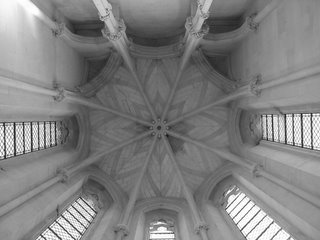
After spending the night at Sarah’s parents’ house, her father suggested that, instead of spending a few hours in Chichester before my train, he drop me off in Arundel. Very hospitably, he showed me a number of interesting places within what seems to be both a beautiful and quite historic area, and even picked me up to drive me to Chichester in time for my return to Oxford. The day was enormously better spent than it would have been in some coffee shop in Chichester, and I got a chance to get to know Sarah’s father a bit. The wedding was a reminder of how little I know her friends and family.
Arundel itself is quite a stunning place. A river runs past the town and, by following its winding and rush-lined banks, you can get a sweeping exposure to the countryside that ends at a pub called the Black Rabbit, where I had lunch. Additionally, the streets of the town itself are worth exploring: particularly since they contain a number of top-notch outdoor equipment stores. While it was surprising to find them there, it was a nice reminder of Vancouver and the wonders of Mountain Equipment Co-Op.
Both during the reception and in Arundel, where I happened to run into them, I spoke with several members of Sarah’s extended family who live in Richmond, a suburb of Vancouver. I remember Sarah visiting them fairly frequently while she was in Vancouver, but I never met them during that period. I expect that their exceptionally photogenic daughter is on several hundred memory cards by now.
- Unfortunately, the whole weekend was relatively unsuccessful photographically. I didn’t want to make myself obtrusive during the wedding and reception – which were both professionally photographed anyhow – and the tendency of the A510 to blow out highlights is annoyingly and frequently manifest in the outdoor photos I took. Several people have already indicate that they will send me some of their photos, which will hopefully turn out better than mine did.

